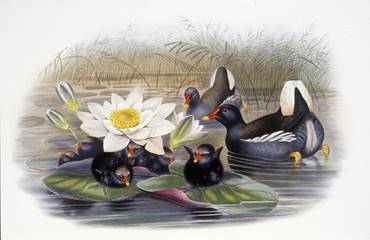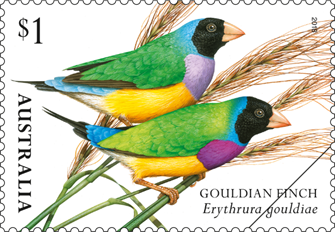Jessie Willcox Smith
Jessie Willcox Smith: An American Illustrator Who Brought Childhood to Life
Children Playing Ring Around The Rosie by Jessie Willcox Smith
Jessie Willcox Smith: An American Illustrator Who Brought Childhood to Life
Jessie Willcox Smith's art was known for its gentle beauty and its ability to capture the magic of childhood. Her paintings often featured young children in idyllic settings, surrounded by flowers, animals, and the beauty of nature.
|
Portrait of Jessie Willcox Smith" by Violet Oakley 1900 |
Jessie was born in Philadelphia in 1863. She discovered her love for art at a young age and attended the School of Design for Women, which later became Moore College of Art and Design.After graduation, Jessie worked as an illustrator for several magazines, including Ladies' Home Journal and Good Housekeeping. Her illustrations were so popular that she quickly became one of the most sought-after illustrators of her time.Jessie Willcox Smith was not only a talented artist, but also a warm and kind-hearted person. She had a love for children and animals, and often found inspiration for her illustrations in the simple joys of everyday life. |
A Child Bath With His Puppy by Jessie Willcox Smith
One of Jessie's favorite pastimes was taking walks in her local park, where she would often sit and sketch the people and animals she saw. One day, she noticed a little girl crying by the pond. Jessie approached her and asked what was wrong, and the girl explained that she had lost her favorite toy.
Jessie knew just how much a beloved toy could mean to a child, so she offered to help the little girl look for it. Together, they searched the entire park, calling out the name of the toy and asking anyone they saw if they had seen it. Finally, as they were about to give up, they spotted a small teddy bear tucked behind a bush. The little girl was overjoyed and hugged Jessie tightly, thanking her for her help.
Hanging Dolls Clothes To Dry by Jessie Willcox Smith
Jessie didn't think much of her kind act, but news of her good deed quickly spread throughout the community. Parents began bringing their children to meet the famous illustrator who had helped the little girl find her toy. Jessie welcomed each child with a warm smile and even drew pictures for them to take home.
Despite her success, Jessie remained humble and dedicated to her craft. She worked tirelessly to perfect her technique, often spending hours on a single painting to get every detail just right. Her attention to detail is evident in every brushstroke, creating a sense of depth and texture that brings her paintings to life.
Cover From A Childs Garden Of Verses by Jessie Willcox Smith
One of Jessie's most famous works is the cover of the 1912 edition of "A Child's Garden of Verses" by Robert Louis Stevenson. The illustration featured a young girl playing with her toys, surrounded by a garden filled with flowers and butterflies. The image captured the innocence and joy of childhood, and it became an iconic representation of the book. Jessie's illustrations were highly sought after by publishers, who recognized her talent for bringing stories to life through her art. She illustrated classics such as "Little Women" and "A Child's Garden of Verses," and her illustrations became synonymous with the stories themselves.

Good Housekeeping Cover and The Canadian Home Journal 1922 Ivory Soap Ad Poster Print by Jessie Willcox Smith
Jessie's style was characterized by her attention to detail, her ability to capture expressions and emotions, and her use of soft colors and light. She created countless illustrations for children's books and magazines, often featuring children and animals. Jessie also created illustrations for advertising campaigns for companies such as Ivory Soap and Colgate.
Jessie's art was also highly influential in shaping the aesthetic of children's literature and advertising in the early 20th century. Her use of soft colors and light, and her ability to capture expressions and emotions, helped to create a style that became instantly recognizable and highly sought after.
Over time, Jessie became known as much for her kind heart as she was for her artistic talent. She continued to create beautiful illustrations that captured the innocence and wonder of childhood, but she also dedicated herself to helping children in need. She donated her time and artwork to local charities and hospitals, bringing smiles to the faces of countless children.
Jessie continued to work as an illustrator throughout her life, even after she suffered a stroke in 1933. She passed away in 1935, leaving behind a legacy of beautiful illustrations that continue to inspire and captivate audiences today.

Today, Jessie's art remains as beloved as ever, a testament to her skill and the timeless beauty of childhood. Her paintings continue to inspire and delight audiences of all ages, reminding us of the wonder and magic that exists in the world around us.
Jessie's legacy lives on today, not just in her art, but in the kindness and compassion she showed to others. Her story serves as a reminder that even small acts of kindness can have a big impact on the world around us.

The Cover Of Mother Goose Tales by Jessie Willcox Smith
Jessie Willcox Smith was a prolific artist whose illustrations graced the pages of countless books and magazines throughout the early 20th century. Here are some of my favorites:
Illustrations of children enjoying a story with their mother. Jessies illustrations remind me of that warm relaxing time of childhood.
"A Child's Garden of Verses" - Jessie illustrated this classic children's poetry book by Robert Louis Stevenson. Her charming illustrations brought the verses to life and helped to establish her as one of the foremost illustrators of her time.
"Little Women" - Jessie's illustrations for Louisa May Alcott's beloved novel have become iconic. Her depictions of the four March sisters helped to cement their place in the hearts of readers everywhere.
"Bubbles" - This illustration shows a young children blowing bubbles. It is a playful and whimsical work that perfectly captures the joy and innocence of childhood.
Illustrations for "The Water Babies" - Jessie's illustrations for this classic children's book by Charles Kingsley are some of her most detailed and intricate. The illustrations capture the fantastical elements of the story and bring the characters to life in a way that is both charming and magical.
These are just a few examples of the many beautiful artworks that Jessie Willcox Smith created throughout her career. Her talent for capturing the beauty and wonder of childhood has made her work timeless and beloved by generations of readers and art enthusiasts and lucky stitchers!





















































































































































































